By Evelina M. Tainer, Chief Economist
INDICATORS OF INFLATION
FEDERAL RESERVE POLICY
INTEREST RATES
STOCK PRICES
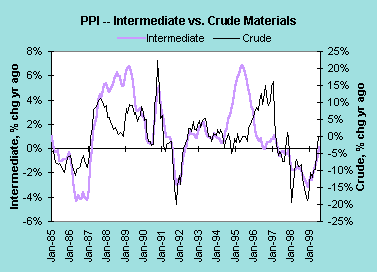
Prices will increase or decrease at earlier stages of production before consumers pay more (less) for finished goods. Changes in prices of food and energy products tend to overshadow changes in prices of other goods. Intermediate and crude materials prices increased moderately in July and are now showing slight gains from a year ago.
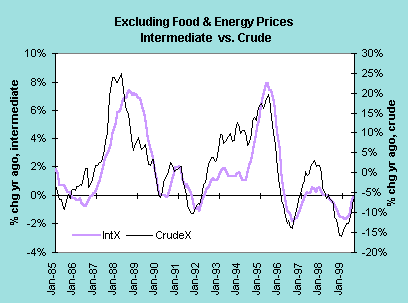
Even after the most volatile components are removed, prices of crude materials and intermediate supplies decreased sharply in 1998 and early 1999. Prices remain subdued after removing the effects of higher energy prices, but some upward creep is evident.
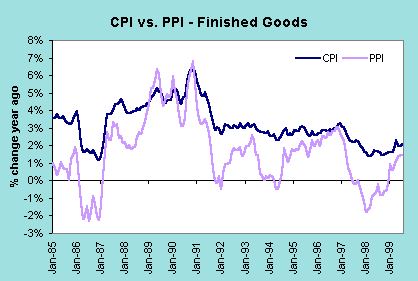
The PPI for finished goods decreased through most of 1998 and suggested deflation was rampant in the goods market. The CPI places more weight on prices of services -- where inflation moderated its rate of growth but never declined. Higher energy prices have boosted the PPI more dramatically than the CPI in the past few months.
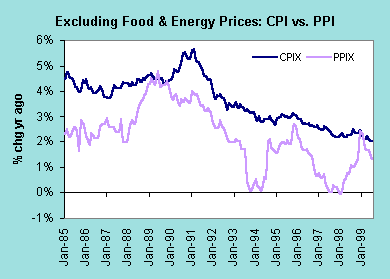
After removing volatile food and energy prices, it turns out that the PPI posted year-over-year declines very briefly in 1998. Fears of deflation were prevalent after Southeast Asian economies collapsed in 1997. Yet, the deflationary pressures were never realized in the United States because of our strong reliance on services. Price pressures are not accelerating these days.
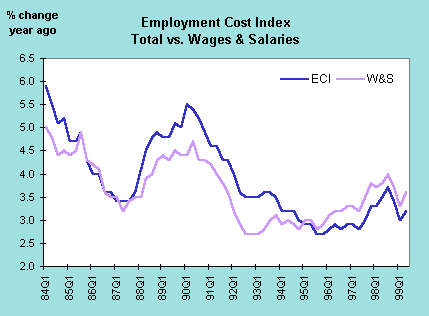
Federal Reserve officials have closely monitored the employment cost index which measures total compensation costs. Compensation includes wages and salaries as well as benefits. After a pick up in 1997-98, compensation costs moderated in early 1999. A slight uptick in second quarter ECI was behind the Fed's rate hike in August.
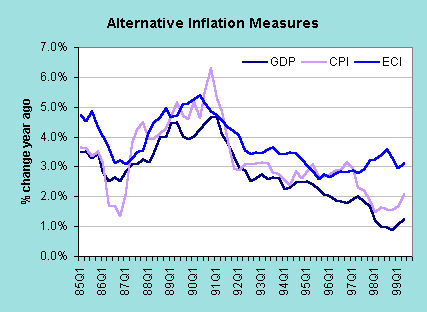
The GDP deflator is the broadest measure of price inflation faced by consumers and producers, yet it gets less attention than the CPI and the employment cost index. Energy prices forced higher prices in all the indices in the second quarter. Nonetheless, the CPI and the GDP deflator remain near or below 2 percent.